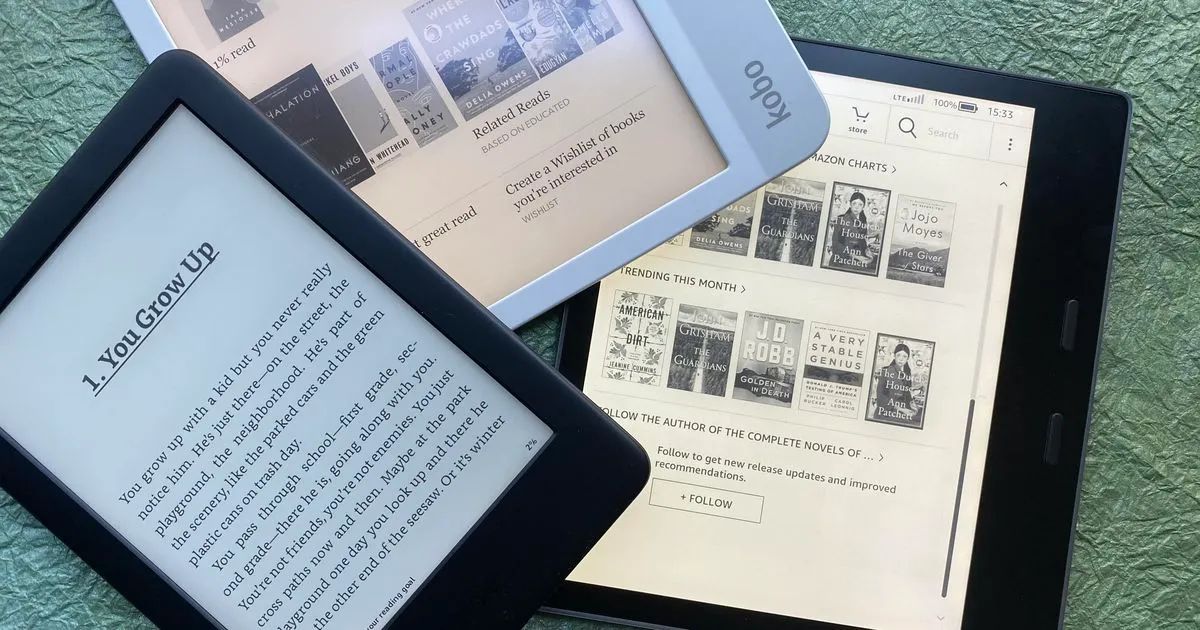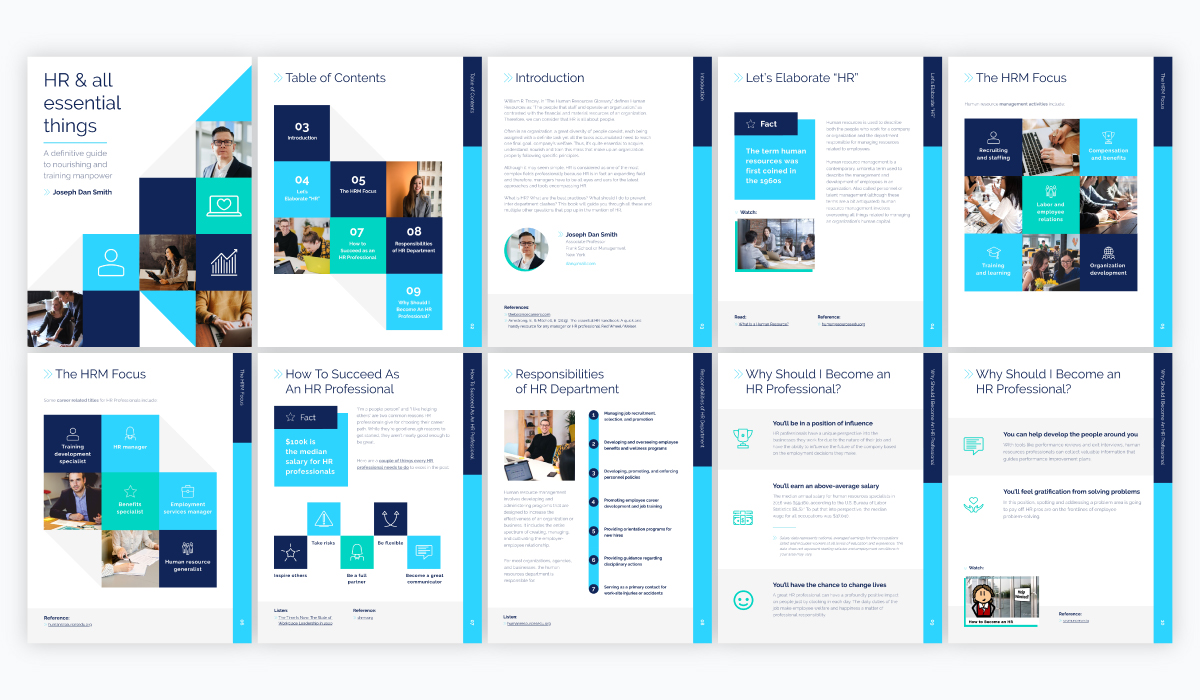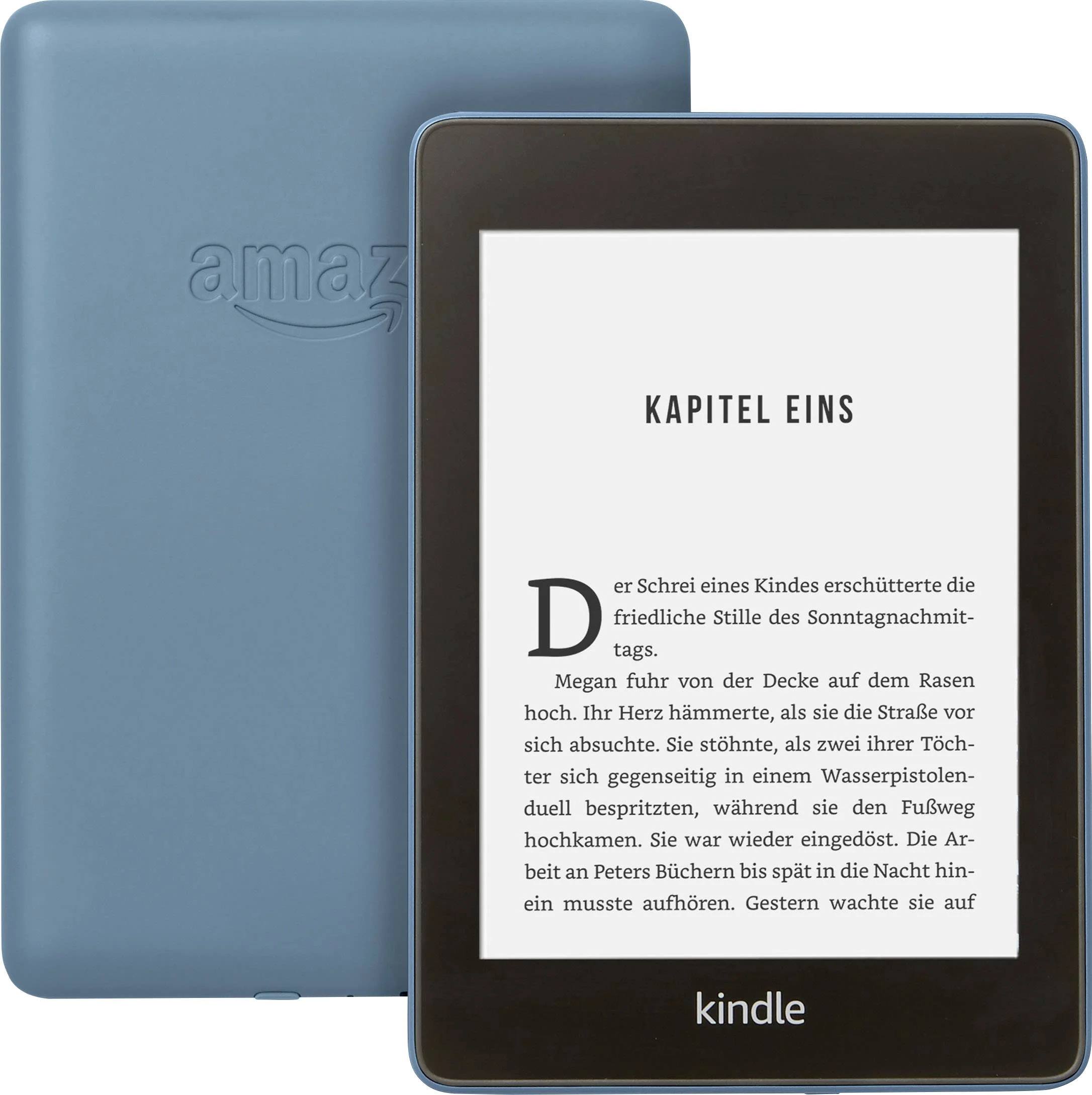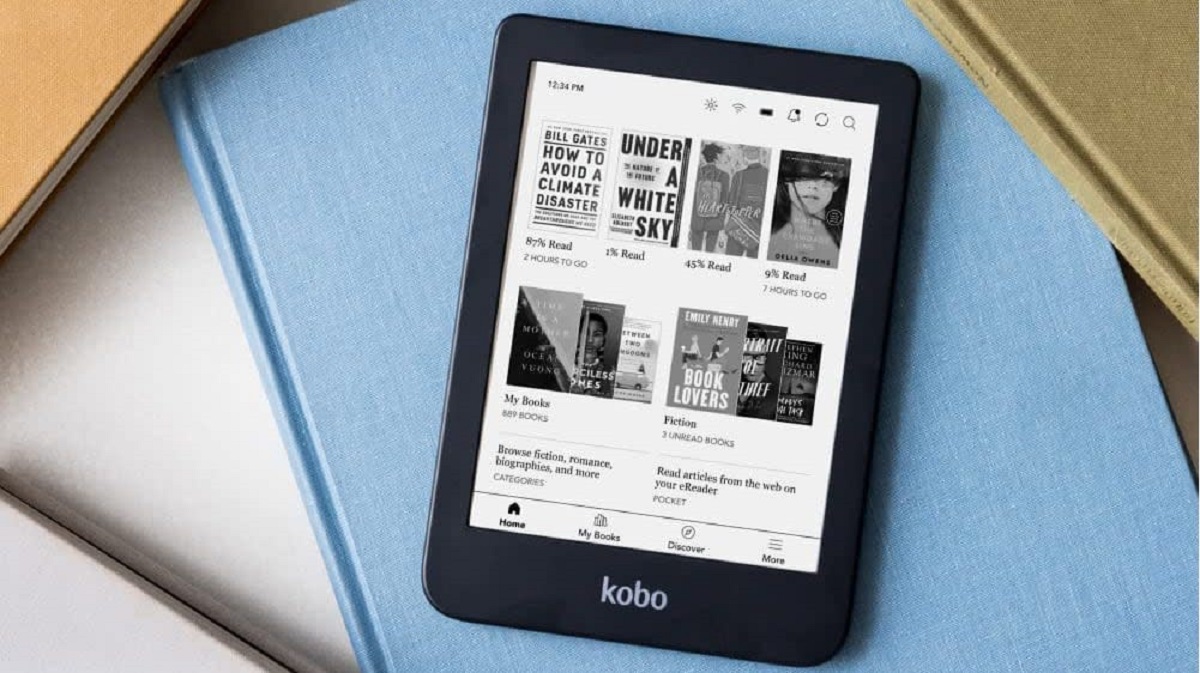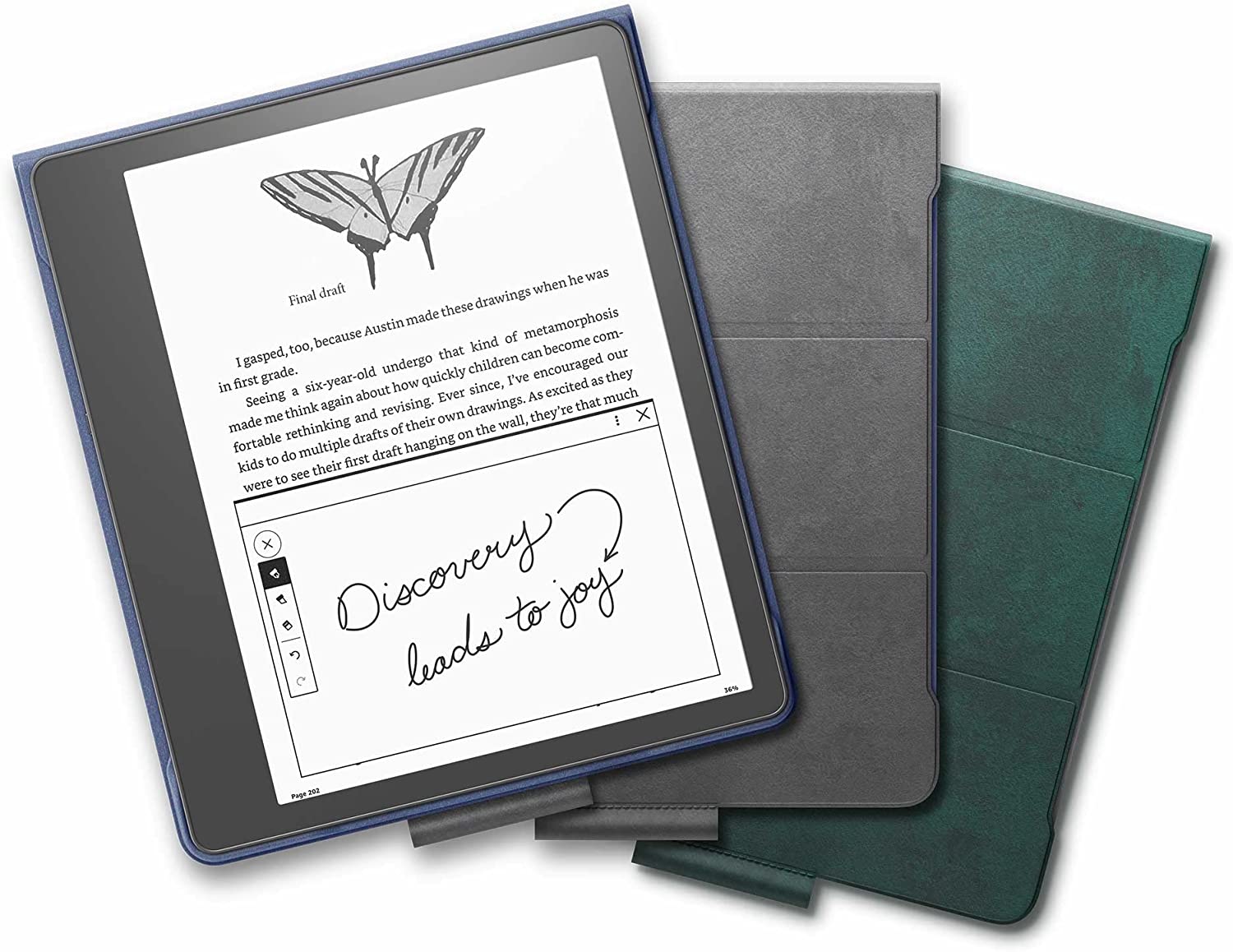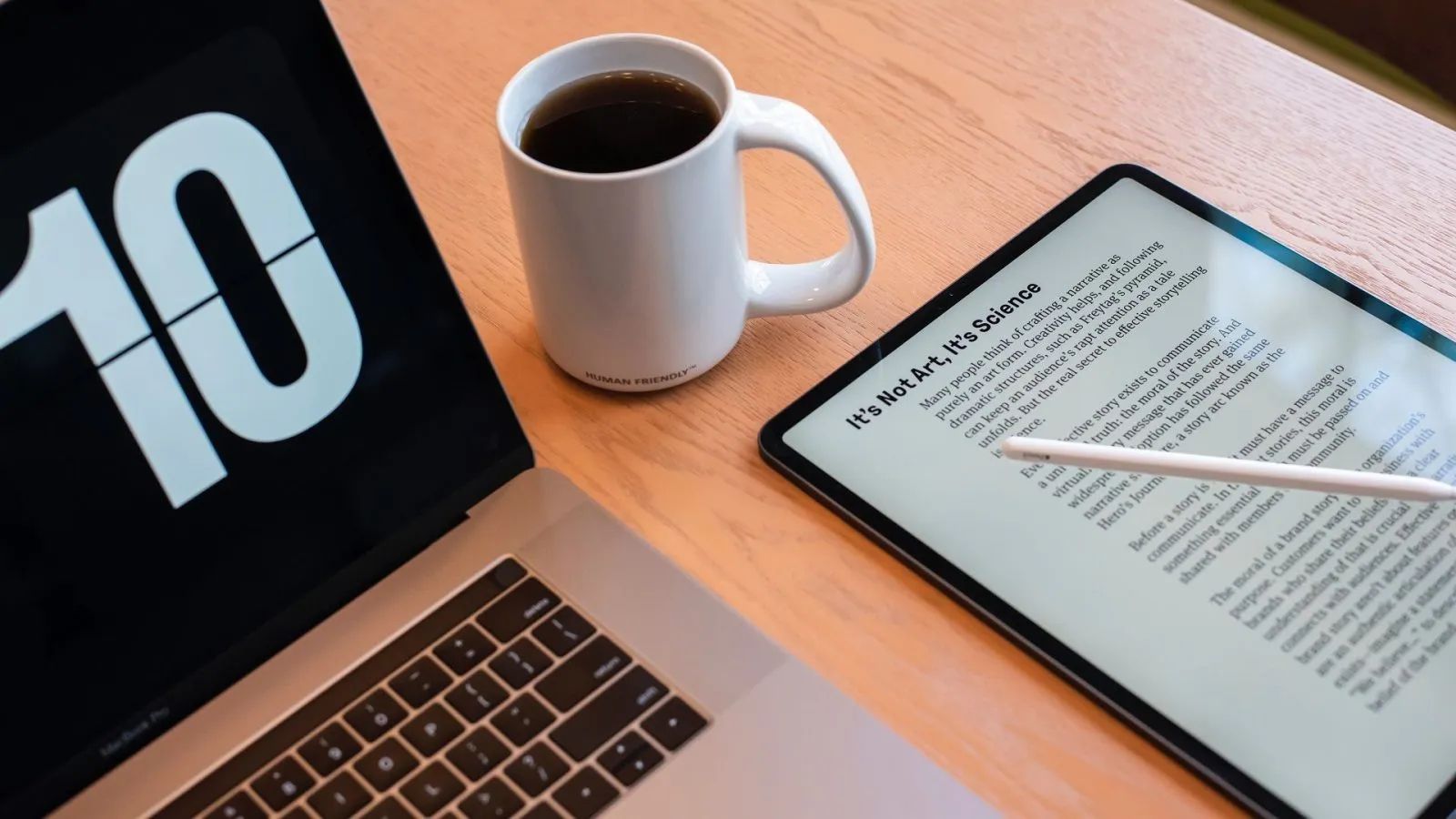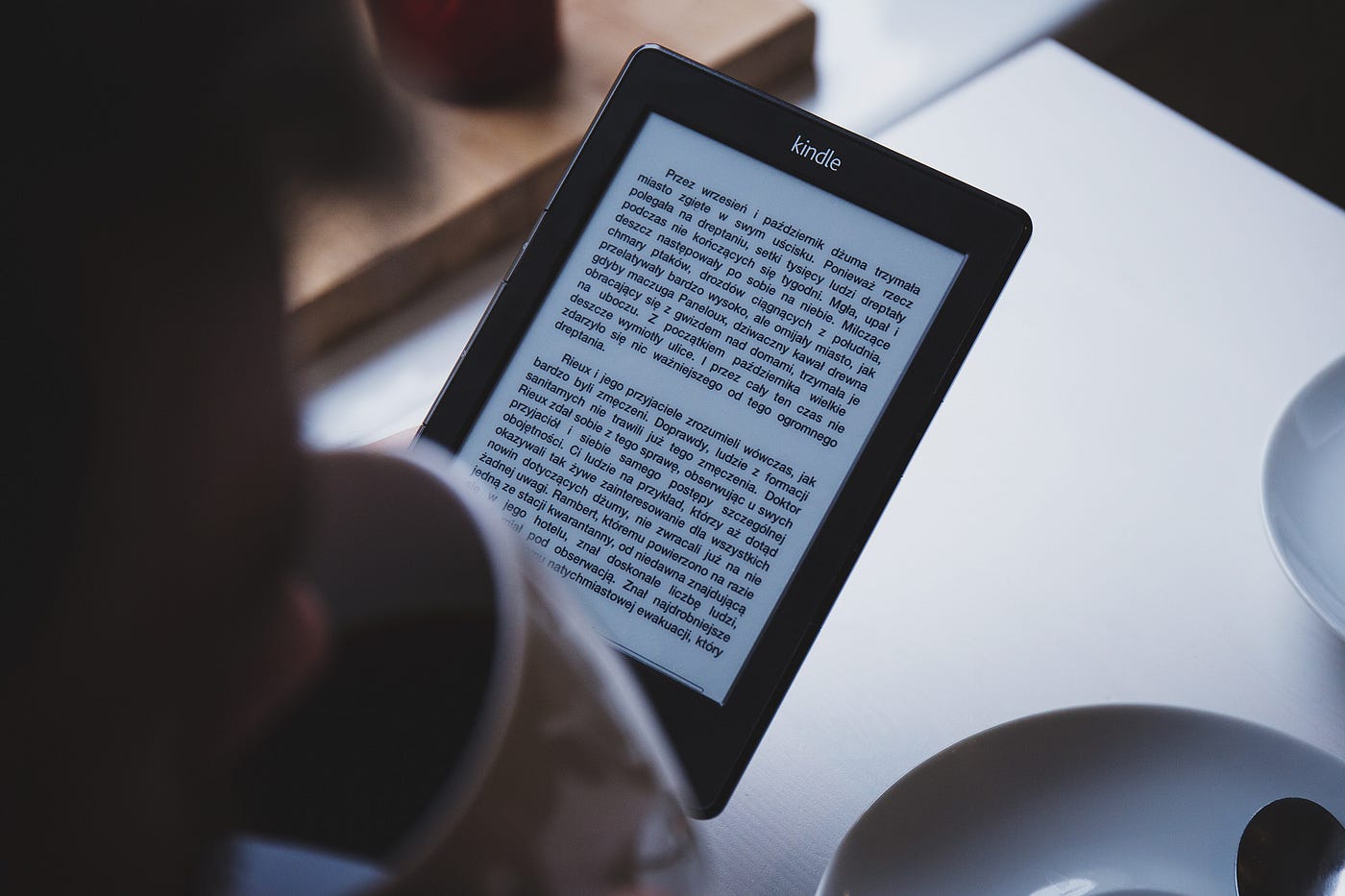Introduction
Welcome to the world of eBook readers! If you’re an avid reader who loves the convenience of carrying multiple books in one portable device, then an eBook reader is your perfect companion. Gone are the days of hauling around a heavy bag filled with books. With an eBook reader, you can have access to your entire library at your fingertips.
But how do you actually get books on your eBook reader? Don’t worry, we’ve got you covered. In this guide, we’ll walk you through the process of putting books on your eBook reader, whether it’s a Kindle, Nook, Kobo, or any other popular device.
First things first, it’s important to understand the different eBook formats. eBooks come in various formats such as EPUB, MOBI, PDF, and more. Each format has its own specifications and compatibility. We’ll delve into the details of these formats and help you understand which one is suitable for your eBook reader.
Once you’ve chosen the right eBook format, the next step is selecting the perfect eBook reader. With a wide range of options available in the market, it’s important to consider factors such as screen size, battery life, storage capacity, and additional features to ensure a smooth reading experience.
After you’ve invested in an eBook reader, the most exciting part begins – transferring eBooks to your device. In the subsequent sections, we’ll guide you through different methods of transferring eBooks from both computers and mobile devices. Whether you prefer a wired connection or wireless transfer, we’ll provide you with step-by-step instructions.
Managing eBooks on your eBook reader is also crucial to ensure easy access and organization. We’ll show you how to organize your eBooks into folders and easily navigate through your library. Plus, if you ever need to remove eBooks from your device to make space for new ones, we’ll guide you on that as well.
As we delve into the process, don’t worry if you encounter any issues along the way. We’ll also address common troubleshooting problems that you might face and provide simple solutions to resolve them.
So, get ready to take your reading experience to the next level by learning how to put books on your eBook reader. Let’s dive in!
Understanding eBook Formats
Before you start putting books on your eBook reader, it’s important to understand the different eBook formats available. Each format has its own specifications and compatibility, so knowing which one works best for your device is essential.
One of the most common eBook formats is EPUB. It’s an open format that is widely supported by most eBook readers, except for Kindle devices. EPUB files are highly customizable, allowing readers to adjust font size, style, and layout to suit their preferences. If you have a non-Kindle eBook reader, EPUB is a great choice.
On the other hand, if you own a Kindle device, the preferred format is MOBI. Amazon’s Kindle devices support MOBI files and offer a seamless reading experience. However, if you come across an EPUB file and want to read it on your Kindle, you can convert it to MOBI using various conversion tools available online.
If you have eBooks in PDF format, they are compatible with most eBook readers, including Kindle. PDF files retain the original formatting of the document, which is ideal for books with complex layouts, images, or charts. However, keep in mind that PDFs may not be as adjustable in terms of font size and layout.
Other formats you may come across include AZW, which is a proprietary format used by Amazon for Kindle books, and TXT, a simple text format that is compatible with virtually all eBook readers. Some advanced eBook readers also support formats such as DOCX, RTF, and HTML.
When acquiring eBooks, it’s important to check the format that is compatible with your specific eBook reader. Websites and eBook stores usually provide download options based on the format supported by your device. Alternatively, you can use eBook conversion tools to convert files from one format to another if needed.
Understanding eBook formats is crucial to ensuring that your eBooks are compatible with your eBook reader. Make sure to choose the appropriate format for a seamless and enjoyable reading experience.
Choosing an eBook Reader
When it comes to choosing an eBook reader, there are several factors to consider to ensure you select the device that best suits your reading needs. Here are some key points to keep in mind:
Screen Size and Display: The screen size and display quality play a significant role in the reading experience. Consider the size of the device’s screen and the resolution to determine whether it can accommodate your reading preferences. Some readers offer adjustable brightness and anti-glare features, making it easier to read in different lighting conditions.
Battery Life: A long-lasting battery is essential for avid readers. Look for an eBook reader with a battery life that can last for weeks or even months without needing a charge. This way, you won’t have to worry about frequent recharging interrupting your reading sessions.
Storage Capacity: The storage capacity of an eBook reader determines how many books you can store on the device. Consider how many books you typically read at a time and choose a reader with sufficient storage space. Some eBook readers also offer options to expand storage using memory cards.
Compatibility: Ensure that the eBook reader you choose is compatible with the eBook formats you prefer. For instance, if you primarily read books in EPUB format, make sure the reader supports EPUB files. It’s also worth considering the availability of a variety of reading apps, allowing you to access your eBooks across multiple devices.
Additional Features: Depending on your preferences, you might want to consider additional features such as built-in lighting for reading in the dark, waterproofing for reading by the pool or bathtub, or even the ability to listen to audiobooks. Explore the options available and choose the features that enhance your reading experience.
Price: Budget is a significant factor when it comes to purchasing an eBook reader. They range in price, from affordable options to high-end premium devices. Consider your budget and choose a reader that offers the features you need without breaking the bank.
User Reviews: Before making a final decision, it’s helpful to read reviews and feedback from other users. This can provide valuable insights into the device’s performance, durability, and overall user experience.
By considering these factors, you can choose an eBook reader that aligns with your reading preferences and provides a seamless and enjoyable reading experience.
Transferring eBooks to Your eBook Reader
Now that you have chosen your eBook reader, it’s time to learn how to transfer eBooks to your device. Whether you have eBooks stored on your computer or mobile device, there are multiple methods you can use to transfer them to your eBook reader.
Transferring eBooks from a Computer: The most common way to transfer eBooks from a computer to your eBook reader is by using a USB cable. Connect your device to the computer using the provided cable, and it will appear as a removable storage device. Simply locate the eBooks on your computer and copy them to the eBook reader’s storage. Once the transfer is complete, safely disconnect the device from the computer.
Transferring eBooks from a Mobile Device: If you have eBooks stored on your smartphone or tablet, you can transfer them to your eBook reader wirelessly using various methods. One option is to use a file-sharing app like Dropbox or Google Drive. Upload the eBooks to the cloud storage service and then access them from your eBook reader using the corresponding app. Alternatively, you can email the eBooks to yourself and download them on the eBook reader.
Using a Cloud Service to Transfer eBooks: Many eBook readers offer built-in cloud services that allow you to sync and transfer eBooks seamlessly. For example, Kindle devices have the option to send eBooks to your Kindle library by accessing your Amazon account. Simply select the books you want to transfer and send them to your eBook reader wirelessly.
Managing eBooks on Your eBook Reader: Once the transfer is complete, it’s important to know how to manage your eBooks on your device. Most eBook readers provide options to organize your eBooks into folders, creating a more structured library. Take advantage of these features to categorize your books by genre, author, or any other method that suits your reading style.
Removing eBooks from Your eBook Reader: As your eBook library grows, you may need to remove books from your device to free up storage. Use your eBook reader’s interface to select and delete unwanted books. This will ensure that your device has enough space for new additions.
By following these simple steps, you can effortlessly transfer and manage your eBooks on your eBook reader, ensuring that you always have your favorite books with you wherever you go.
Transferring eBooks from a Computer
Transferring eBooks from your computer to your eBook reader is a straightforward process that allows you to enjoy your favorite books on the go. Here are the steps to transfer eBooks from a computer to your device:
Step 1: Connect your eBook reader to your computer using a USB cable. Make sure both devices are powered on and properly connected.
Step 2: Once connected, your eBook reader will be recognized by your computer as a removable storage device. It will appear as a new drive or folder in your file explorer.
Step 3: Open the folder where your eBooks are stored on your computer. This may be your documents folder, a dedicated eBook folder, or wherever you have saved your digital book files.
Step 4: Select the eBooks you want to transfer to your eBook reader. You can select multiple files at once by holding down the Ctrl (or Cmd) key and clicking on each file. Alternatively, you can click and drag a selection box to choose a group of files.
Step 5: Once you have selected your eBooks, right-click on the files and choose “Copy” from the context menu. Alternatively, you can use the keyboard shortcut Ctrl+C (or Cmd+C) to copy the files.
Step 6: Go to the window or folder representing your eBook reader in the file explorer. Right-click within the folder and select “Paste” from the context menu. Alternatively, you can use the keyboard shortcut Ctrl+V (or Cmd+V) to paste the files.
Step 7: After the copy process is complete, safely eject or disconnect your eBook reader from your computer. This ensures that the data transfer is complete and prevents any data loss or corruption.
Step 8: On your eBook reader, navigate to the library or bookshelf section to access your newly transferred eBooks. Depending on your device’s interface, you may need to refresh or synchronize the library for the new books to appear.
By following these steps, you can easily transfer eBooks from your computer to your eBook reader and start enjoying your favorite reads anytime, anywhere.
Transferring eBooks from a Mobile Device
Transferring eBooks from your mobile device to your eBook reader opens up a world of reading possibilities while on the go. Whether you have eBooks stored on your smartphone or tablet, there are a few methods you can use to transfer them to your eBook reader. Here’s how:
Option 1: File-sharing Apps
One of the easiest ways to transfer eBooks from your mobile device to your eBook reader is by using file-sharing apps like Dropbox, Google Drive, or OneDrive. Here’s how:
Step 1: Install a file-sharing app on both your mobile device and eBook reader if they are not already installed.
Step 2: Upload the eBooks from your mobile device to the cloud storage service of your choice. This can usually be done by selecting the files and choosing the “Upload” or “Share” option within the app.
Step 3: On your eBook reader, open the corresponding file-sharing app and log in to your account.
Step 4: Navigate to the folder where you uploaded the eBooks and select the files you want to transfer to your eBook reader.
Step 5: Choose the “Download” or “Save to device” option to transfer the selected eBooks to your eBook reader’s storage.
Option 2: Email
If your eBook reader has an email app or supports web-based email, you can use this method to transfer eBooks. Here’s how:
Step 1: Attach the eBooks you want to transfer to an email on your mobile device.
Step 2: Send the email to yourself or the email address associated with your eBook reader.
Step 3: On your eBook reader, access the email app or open the web-based email platform.
Step 4: Locate the email containing the attached eBooks and download the attachments to your eBook reader’s storage.
Option 3: eBook Reader Apps
Some eBook readers have companion apps that allow for seamless synchronization with your mobile device. If your eBook reader has an app available, install it on your mobile device and follow the instructions provided to transfer eBooks. These apps often have features like automatic syncing and cloud storage integration, making it easy to access your eBooks on multiple devices.
Once the transfer is complete, open your eBook reader and navigate to the library or bookshelf section to access your newly transferred eBooks. Depending on your device’s interface, you may need to refresh or synchronize the library for the new books to appear.
By utilizing these methods, you can effortlessly transfer eBooks from your mobile device to your eBook reader and expand your reading options whenever and wherever you desire.
Using a Cloud Service to Transfer eBooks
A convenient and popular method of transferring eBooks to your eBook reader is by utilizing a cloud service. Many eBook readers offer built-in cloud services that allow you to sync and transfer eBooks seamlessly. Here’s how you can use a cloud service to transfer eBooks:
Step 1: Set up an account with a cloud storage service that is compatible with your eBook reader. Some common options include Dropbox, Google Drive, OneDrive, or the cloud service associated with your specific eBook reader.
Step 2: On your computer, upload the eBooks you want to transfer to the cloud storage service of your choice. This can typically be done by dragging and dropping the files into the designated folder on your computer or using the upload feature provided by the cloud service.
Step 3: On your eBook reader, access the cloud service app or built-in feature. Sign in to your cloud storage account within the app.
Step 4: Once you are logged into your cloud storage account on your eBook reader, you should be able to see the files you uploaded from your computer. You can then select the eBooks you want to transfer to your eBook reader.
Step 5: Choose the “Download,” “Sync,” or “Save to device” option provided by the cloud service app to transfer the selected eBooks to your eBook reader’s storage. The exact steps may vary depending on the specific cloud service and eBook reader you are using.
Step 6: After the transfer is complete, open your eBook reader and navigate to the library or bookshelf section. You should now be able to access your newly transferred eBooks.
A significant advantage of using a cloud service to transfer eBooks is that it allows for effortless syncing across multiple devices. This means you can start reading a book on your computer, continue reading on your mobile device while on the go, and seamlessly switch back to your eBook reader whenever you desire. The cloud service ensures that your reading progress and library remain up to date on all devices.
This method also provides an added layer of security for your eBook collection. By storing your eBooks in the cloud, you have a backup copy in case of device loss or damage.
By following these steps, you can easily transfer eBooks to your eBook reader using a cloud service, providing you with flexibility and convenience in accessing your digital library.
Managing eBooks on Your eBook Reader
Once you have transferred eBooks onto your eBook reader, it’s important to effectively manage and organize your digital library. This ensures easy access to your favorite books and provides a seamless reading experience. Here are some tips for managing eBooks on your eBook reader:
Organizing eBooks into Folders: Most eBook readers allow you to create folders to organize your eBooks. Take advantage of this feature by creating folders based on genres, authors, or any other criteria that makes sense to you. This way, you can quickly locate specific books or browse your library with ease.
Renaming eBooks: If the file names of your eBooks are not descriptive or standardized, consider renaming them on your eBook reader. This makes it easier to identify and search for books within your library. However, keep in mind that renaming an eBook file on your eBook reader does not change the file name on your computer or other devices.
Sorting Options: Explore the sorting options available on your eBook reader to customize how your eBooks are displayed in your library. You can typically sort by title, author, recent additions, or even your own custom order. Play around with the sorting options to find the arrangement that works best for you.
Bookmarks and Highlights: Make use of the bookmark and highlight features on your eBook reader to mark important passages or sections in your eBooks. This allows you to easily revisit specific parts of a book, reference information, or simply keep track of your reading progress. Take advantage of these features to personalize your reading experience.
Removing eBooks from Your eBook Reader: If you find that your eBook reader is running out of storage space, you may need to remove some eBooks from your device. Locate the unwanted eBooks within your eBook reader’s interface and select the option to delete or remove them. Be cautious to avoid deleting any eBooks by mistake, especially if you have not backed them up elsewhere.
Backup Your eBooks: It’s always a good idea to back up your eBooks to a secure location. Whether it’s an external hard drive, a cloud storage service, or your computer, having a backup ensures that you don’t lose your entire eBook collection in case of device failure or loss. Regularly create backup copies of your eBooks to safeguard your digital library.
By effectively managing your eBooks on your eBook reader, you can maintain a well-organized and easily accessible library. These tips will help you make the most of your digital reading experience and ensure that your eBook collection remains in order.
Organizing eBooks into Folders
Organizing your eBooks into folders on your eBook reader is a great way to keep your digital library organized and easily accessible. By categorizing your eBooks into different folders, you can quickly locate specific books, maintain a structured library, and improve your overall reading experience. Here are some tips for effectively organizing your eBooks into folders:
Choose a System: Before creating folders, consider your preferred organizational system. You can organize eBooks by genre, author, series, or any other criteria that makes sense to you. Think about how you would naturally browse and search for a book, and create folders accordingly.
Create Folders: Using your eBook reader’s interface, navigate to the library or management section where you can create folders. Most eBook readers have an option to create new folders directly on the device. Choose a clear and descriptive name for each folder to easily identify its contents.
Sort eBooks: Once you have created your folders, start sorting your eBooks into the appropriate folders. Look for the option to move or organize books within your eBook reader’s interface. You can typically select multiple eBooks and place them in the desired folder.
Subfolders: If you have a large collection of eBooks, you may consider creating subfolders within main folders to further organize your library. For example, within a “Fiction” folder, you can create subfolders for different genres like “Mystery,” “Romance,” or “Science Fiction.”
Update Folders Regularly: As you acquire new eBooks, make it a habit to add them to the appropriate folders immediately. This ensures that your library remains organized and avoids the accumulation of unsorted books. Regularly review your folders and make any necessary adjustments to maintain an efficient organizational system.
Consider Collections or Tags: Some eBook readers offer additional features such as collections or tags that allow you to further categorize your eBooks. Collections may serve as virtual folders, grouping eBooks based on different themes or reading goals. Tags, on the other hand, can be used to assign descriptive keywords to your eBooks for easy searching.
Import Existing Folder Structure: If you already have a well-organized eBook library on your computer, some eBook readers allow you to import the existing folder structure. This can save you time and effort, especially if you have already spent time organizing your eBooks on another device or software.
By organizing your eBooks into folders, you can create an efficient and user-friendly digital library on your eBook reader. This allows for easy navigation, quick access to specific books, and a more enjoyable reading experience overall. Take the time to set up a folder structure that works best for you, and keep your eBook collection in order.
Removing eBooks from Your eBook Reader
As your collection of eBooks grows on your eBook reader, you may need to remove certain books to free up storage space or declutter your digital library. Removing eBooks from your device is a simple process that allows you to manage your collection effectively. Here are some tips on how to remove eBooks from your eBook reader:
Locate Unwanted eBooks: Navigate to the library or bookshelf section on your eBook reader and locate the eBooks you want to remove. Depending on your device, you may be able to sort and filter your library to find specific books more easily.
Select eBooks for Removal: Once you have located the unwanted eBooks, select them for removal. Most eBook readers offer options to select multiple eBooks at once. You can typically do this by tapping or clicking on the books you want to remove.
Delete or Remove eBooks: After selecting the eBooks, look for the option to delete or remove them from your eBook reader. The exact wording may vary depending on the device, but you should be able to find a menu option or icon that allows you to take this action.
Confirm Deletion: Depending on your eBook reader, you may be prompted to confirm the removal of the selected eBooks. Confirm the action to proceed with the deletion process. Be cautious when deleting eBooks, as this action cannot be undone once completed.
Remove from Device vs. Library: Some eBook readers give you the option to remove eBooks from the device while keeping them in your library or to completely remove them from both the device and the library. Choose the option that aligns with your preferences and needs.
Backup Important eBooks: Before removing any eBooks from your eBook reader, consider backing up any books that are important to you. This ensures that you have a copy of those books saved elsewhere, such as on your computer or in a cloud storage service. It’s always better to be safe and retain a backup of cherished eBooks.
Regular Maintenance: To keep your eBook reader organized and prevent it from becoming cluttered, it’s a good idea to regularly review and remove eBooks that you no longer need or want. This practice helps optimize storage space and keeps your library focused on the books you truly enjoy.
By following these steps, you can efficiently remove unwanted eBooks from your eBook reader, freeing up storage space and keeping your digital library organized and clutter-free.
Troubleshooting Common Issues
While using an eBook reader, you may encounter some common issues that can hinder your reading experience. However, many of these issues have simple solutions that you can try on your own. Here are some troubleshooting tips for common eBook reader issues:
Freezing or Unresponsive Device: If your eBook reader becomes unresponsive or freezes, try performing a reset. Most eBook readers have a dedicated reset button or a combination of buttons that you can press and hold to initiate a restart. Check the device’s user manual or the manufacturer’s website for specific instructions.
Slow Performance: If your eBook reader is running slowly, it might be due to a lack of available storage or too many background processes. Try deleting unnecessary eBooks or files to free up space. You can also close any background apps or processes that might be using system resources. Restarting the device can also improve performance.
Screen Display Issues: If you’re experiencing screen display problems, such as a faint or dim screen, adjust the brightness settings on your eBook reader. Most devices have a brightness slider or setting that you can customize according to your preference. Also, check if there’s a dedicated “night mode” feature that reduces screen brightness for more comfortable nighttime reading.
Touchscreen Unresponsiveness: If the touchscreen of your eBook reader is unresponsive or inaccurate, clean the screen with a soft, lint-free cloth to remove any dirt or smudges that may be affecting its sensitivity. Avoid using harsh chemicals or abrasive materials that could damage the screen. If the issue persists, perform a reset or contact the device’s manufacturer for assistance.
Battery Draining Quickly: If you find that your eBook reader’s battery life is significantly shorter than usual, check for any apps or features running in the background that may be consuming power. Disable unnecessary wireless connections like Wi-Fi or Bluetooth when not in use. Lowering the screen brightness or activating power-saving modes can also help prolong battery life.
Incompatibility with eBook Formats: If you’re unable to open or access specific eBooks on your eBook reader, verify that the file format is supported by your device. Consider converting the eBook to a compatible format using free online conversion tools. Additionally, ensure that you’ve transferred the eBook to the correct location or folder on your device.
Syncing Issues: If you’re using a cloud service or companion app to sync your eBooks across devices, ensure that your devices are connected to the internet and logged into the same account. Check the sync settings on your eBook reader to ensure it’s set up correctly. If the issue persists, try signing out and signing back in to your account or restarting the device.
Software Updates: Regularly check for software updates for your eBook reader. Manufacturers often release updates with bug fixes, performance improvements, and new features. Keeping your device up to date can help resolve existing issues and ensure a smooth reading experience.
If you encounter any other issues with your eBook reader that are not mentioned here or if the troubleshooting steps provided do not resolve the problem, it’s recommended to consult the user manual or contact the manufacturer’s support team for further assistance.
By following these troubleshooting tips, you can address common issues that may arise while using your eBook reader and enjoy uninterrupted reading sessions.
Conclusion
Congratulations! You’ve now learned how to effectively put books on your eBook reader and manage your digital library. Understanding eBook formats, choosing the right eBook reader, and transferring eBooks from various devices are essential skills in optimizing your reading experience.
By familiarizing yourself with different eBook formats such as EPUB, MOBI, and PDF, you can ensure compatibility with your eBook reader and easily access your favorite books. Selecting the perfect eBook reader that meets your needs in terms of screen size, battery life, storage capacity, and additional features is vital for a seamless and enjoyable reading experience.
Transferring eBooks from your computer or mobile device to your eBook reader can be done through various methods such as USB cable transfers, file-sharing apps, email attachments, or utilizing cloud services. Organizing your eBooks into folders, managing your digital library effectively, and removing unwanted books help keep your eBook reader organized and clutter-free.
If you encounter any issues along the way, troubleshooting common problems such as freezing devices, slow performance, screen display issues, or battery drainage can easily be resolved with simple steps. Keeping your eBook reader’s software up to date and seeking support from the manufacturer when needed can further enhance your experience.
Now that you have the knowledge and tools to navigate your eBook reader, you can immerse yourself in a vast library of books at any time and in any place. Enjoy the convenience, portability, and flexibility that eBook readers offer as you uncover new worlds, gain knowledge, and indulge in the pleasure of reading.
So, grab your eBook reader, embark on new literary adventures, and lose yourself in the captivating stories that lie within the digital pages of your favorite books!







